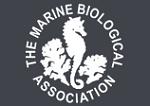APHOTOMARINE
An educational resource dedicated mainly to the photography
and diversity of marine life that can be found in coastal waters
and intertidal areas of Great Britain and Ireland by David Fenwick.
Sub-class calcaronea
- with 1.0mm division rule 1
Calcareous sponge
Sub-class calcaronea
- with 1.0mm division rule 2
Calcareous sponge
Sub-class calcaronea
- author holding sponge 1
Calcareous sponge
Sub-class calcaronea
- author holding sponge 2
The 320mm long specimen above was found attached to the brown algae Furbellows that was growing from a pontoon at Newlyn Marina, Newlyn, Cornwall, 18.04.17.
The species has been determined not to be a Sycon or Sycon ciliatum as presumed.
It may have a fast growth rate and short lifecycle e.g. September to June, it is not yet know if the species has conules arising from its exterior, see Sycon ciliatum. Research is currently ongoing.
In-situ under marina pontoons (screen captures of GoPro video)
Calcareous sponge
Sub-class calcaronea
- under marina pontoon 1
Calcareous sponge
Sub-class calcaronea
- under marina pontoon 2
Calcareous sponge
Sub-class calcaronea
- under marina pontoon 3
Calcareous sponge
Sub-class calcaronea
- under marina pontoon 4
Calcareous sponge
Sub-class calcaronea
- under marina pontoon 5
Calcareous sponge
Sub-class calcaronea
- under marina pontoon 6
Spicule images
Calcareous sponge
Sub-class calcaronea
- spicules 0.1mm division rule 1
Calcareous sponge
Sub-class calcaronea
- spicules 0.1mm division rule 1
Calcareous sponge
Sub-class calcaronea
- spicules 0.1mm division rule 1
Calcareous sponge
Sub-class calcaronea
- spicules 0.1mm division rule 1
Calcareous sponge
Sub-class calcaronea
- spicules 0.1mm division rule 1
Calcareous sponge
Sub-class calcaronea
- spicules 0.1mm division rule 1
The specimens at Newlyn are really too long to be Sycon ciliatum, indeed a sponge expert has stated that the genus is not even Sycon and that this is likely to be an exotic species, so non-native. Investigations are on going and sponge specimens will be sent off for analysis.
By way of an update as of 05.10.20, the following paper has been sent to me, and it has an interesting quote that is applied to Sycon ciliatum. However, the paper the quote refers to, also see below, did not use DNA to establish the identity of the sponge, it was presumed to be Sycon ciliatum. It therefore has to be scientifically established by sequencing that Sycon ciliatum is this sponge, and that this sponge is the same as the sponge at Newlyn. What doesn't help matters is that the type locality for Sycon ciliatum is East Greenland and the data about it has been lost.
Ref: Global Diversity of Sponges (Porifera).
April 2012. PLoS ONE 7(4):e35105
Quote - "Calcareous sponges are relatively small, measured in mm
or a few cm, however in especially rich temperate estuaries Sycon
ciliatum can reach more than 50 cm in length and 3 cm in
diameter [91]."
[91]. Koechlin N. (1977) Installation d’une epifaune a Spirographis spallanzani Viviani,Sycon ciliatum Fabricius et Ciona intestinalis (L.) dans le port de plaisance de
Lezardrieux (Côtes du Nord). Cah Biol Mar 18: 325–337.
Quote from paper above -
La plupart des individus, fixés en grappes ou isolés, ont une base de fixation très fine : 3 à 4 mm2 pour les éponges de 30 cm de long. La taille des plus grandes éponges observées atteint 70 cm, taille gigantesque par rapport à la taille habituelle de 1 à 5 cm. Les plus petites éponges mesurées ont 1 cm : il existe toutes les tailles intermédiaires. Sur le site de prélèvement de 900 cm2, on a compté 303 éponges, soit 3 360 au m2. Sur celui de 1 025 cm2 on a 594 éponges, soit 5 790 au m2. Notons que les éponges les plus grandes présentes sur ces deux sites n'avaient que 30 cm de long.
APHOTOMARINE supports open source data recording and sharing for the benefit of wildlife, recorders, research, science and education. The project recommends the following websites and works with the following bodies and organisations.
A website based on Sponges of the British Isles 1992 Edition, revised and extended, 2007, by Bernard Picton, Christine Morrow & Rob van Soest. Without a shadow of a doubt the best online resource to sponges of Britain and Ireland.
The Marine Biological Association or MBA, based in Plymouth, is one of the world’s longest-running societies dedicated to promoting research into our oceans and the life they support. Since 1884 the MBA has been providing a unified, clear, independent voice on behalf of the marine biological community.It has a growing membership in over 40 countries.
The National Biodiversity Network or NBN is a charity that supports open source data sharing and recording supporting conservation, science and education. "Why do recorders need open source?". Simply because it supports the core values of wildlife recording and the free use of records and data over a very wide network that includes partners like the Natural History Museum.
The taxonomy used here is based on that of the following database, which is also used by the MBA, NHM and the NBN.
The World Register of Marine Species or WoRMS.


